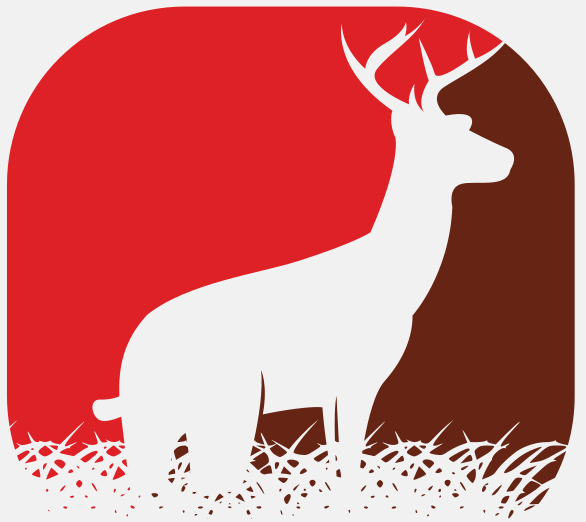One of the most popular uses for crossbows is deer hunting, and for good reason. Crossbows offer hunters a unique advantage when it comes to bringing down these elusive creatures. If you’re looking to up your deer hunting game this season, here are seven tips to help you have the best experience possible.
1. Choose the Right Crossbow for You
The first step to having a successful deer hunting experience with a crossbow is to choose the right weapon for the job. There are a variety of different crossbows on the market, so it’s important to do your research and find the one that best suits your needs. Consider things like draw weight, arrow speed, and overall weight and size when making your decision. If you are looking for a few different options, we have some different reviews and choices put together you can find by clicking here. Make sure you are comfortable with your weapon before you head out into the brush.
2. Proper Treestand Placement is Important when Crossbow Hunting
When you’re deer hunting, where you set up your treestand can make all the difference. You want to be sure that you’re placing your stand in an area that deer frequent. Look for areas with fresh tracks and droppings, and try to avoid places where there is a lot of human activity. Because of how unwieldy a crossbow can be, offsetting your blind is also important. This will give you more room to maneuver and take your shot. It can be really helpful in a scenario where you have a larger deer in your sights.
Another thing to consider when placing your crossbow treestand is the angle of your shot. You want to be sure that you have a clear, unobstructed view of your target. If there are branches in the way, or if the stand is too close to the ground, you may not be able to take an accurate shot. Making sure that you are set up without obstruction when shooting is important, because the recoil of a crossbow is powerful. Injuring yourself or damaging your x-bow on an errant tree limb is a very real possibility.
Once you are comfortable with the location of your treestand, and feel confident in both your space to take a shot and the angles available, you can start to think about your prey. If you’re hunting deer, you’ll want to think about where they like to feed and travel. Placing your stand near a food source, or in an area where multiple deer travel, will increase your odds of getting a shot.
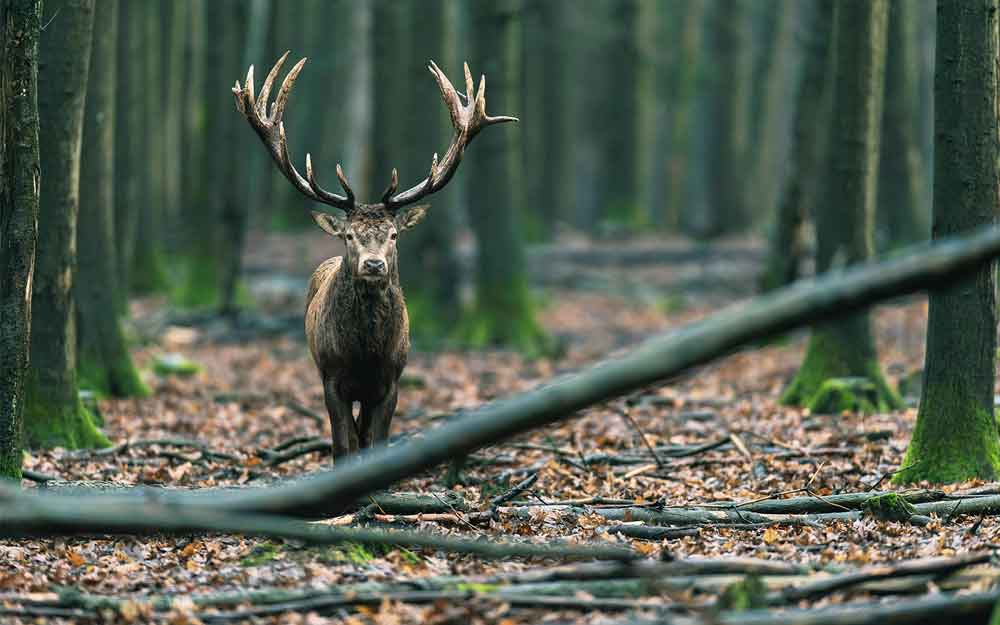
Remember, when you’re crossbow hunting, the placement of your treestand and blinds is important for both safety and success. Be sure to pick a spot that gives you plenty of room to move and shoot, with a clear line of sight to your target. Consider the terrain and the habits of your prey when making your decision. A little bit of set up surrounding your stand goes a long way.
3. Make Sure to Set Up a Rest
A rest is an essential piece of equipment for any crossbow hunter. It helps to steady your shot and gives you a more accurate shot. Crossbows are heavy pieces of equipment, and can be difficult to hold steady when you’re aiming. A rest will help support the weight of your crossbow and keep it level when you’re taking your shot.
Many hunters prefer a shooting stick, which is a tripod-like device that you can set up near your stand. This gives you a stable platform to set your crossbow on, and can be adjusted to different heights to accommodate your needs.
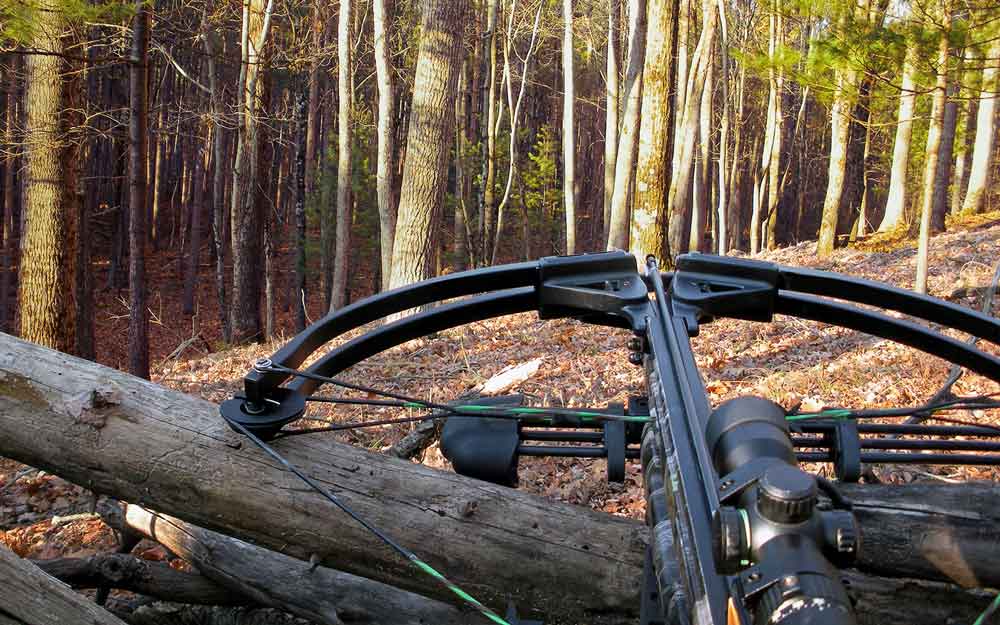
When you’re purchasing one, check to see if it has a safety rail, which is a padded support that goes across the top of the rest. This will help to keep your fingers away from the string when you’re taking your shot, and can help prevent accidents. You should also look for a rest that can be easily adjusted, so you can fine-tune your aim before you take your shot.
There’s nothing wrong with going the shooting stick route either, just make sure it’s sturdy enough to support the weight of your crossbow. You don’t want the stick to wobble or move when you’re taking your shot, as this can ruin your accuracy. If you’re using a shooting stick, make sure to set it up near your stand so you have easy access to it when a buck comes into sight. Shots can go wrong quickly and be wasted if you are too rushed trying to set up.
4. Steer Clear of the Triangle of Death
The triangle of death is created when you have a drawn bow, and is the space between the trigger sear, riser and the barrel. ALWAYS keep your finger out of the string travel, and off the trigger, when your bow is drawn. Any time your finger enters this triangle, there is a chance for an accident to occur. The cams and the limbs of your crossbow are under a massive amount of tension, and many people have lost fingers, fingernails, broken bones, or more, because of an accident.
The string can slip, the trigger could get bumped, or the bow could fall and discharge. All of these scenarios could lead to serious injury, so it’s important that you take care to avoid the triangle of death at all times. When you’re setting up your stand, make sure that you have a comfortable place to rest your bow so that you’re not tempted to hold it in the triangle of death while you wait for game. Obviously be safe with the barrel, rope, and your broadheads as well.
5. Cock on the Ground Before Climbing Your Treestand
When you’re ready to take your shot, the last thing you want to do is fumble with your crossbow while you’re up in your stand. This can be dangerous, and could lead to an accident. For this reason, it’s always best to cock your crossbow on the ground before you climb into your stand. The foot stirrup is under a lot of pressure when cocking a crossbow, and you’re pretty high in the air when in a stand. Enough pressure to knock you over and heights don’t mix.
Some modern crossbows have cocking devices and crossbow hunters have been known to load and cock these in stand, but its still recommended to do so on the ground. Excalibur and Barnett both make options for this, as do other manufacturers.
6. Take Advantage of a Draw Line
The ONLY way you should ever be hoisting your crossbows into a stand is with a draw line. Bolts, scope, stock, broadhead, everything can get heavy – but weight is not the real reason a draw line is mandatory. Never secure your bow to the draw line through the trigger housing.
Using the stock is a much better option, allowing you to keep all the bolts, points, broadheads pointed to the ground, and keep an eye on the limbs for the ascent.
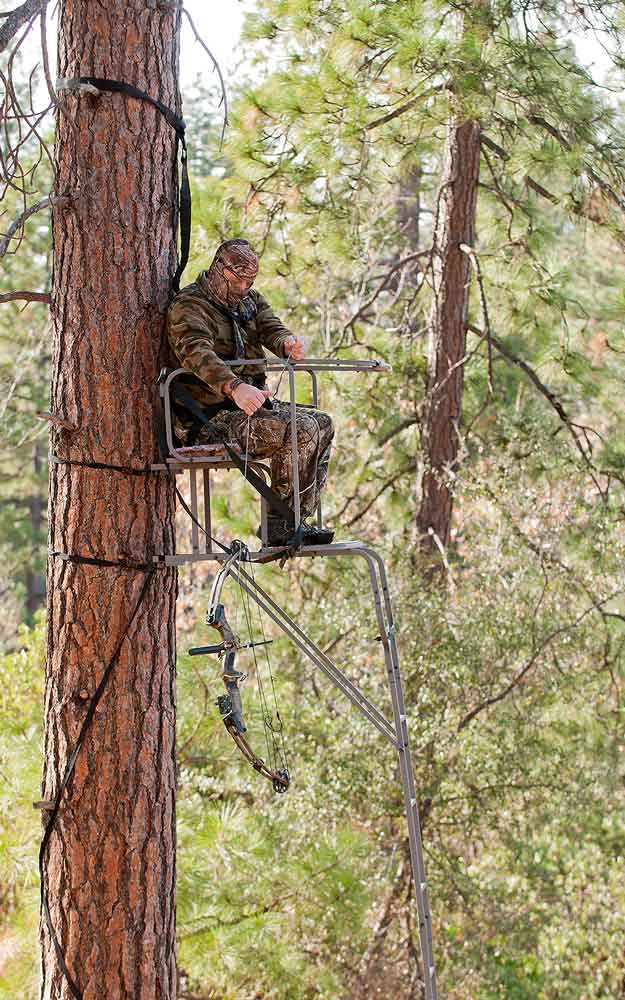
Lowering the bow back down the same way at the end of the day is the way to go as well, for all the same reasons. This applies to using a compound bow as well!
7. Calibrate Your Scope and Rangefinder Together
Your crossbow scope and rangefinder need to be calibrated to work together. This means that you need to adjust the settings on your scope so that the crosshair is in the right place at different distances. Many scopes have pre-marked ranging reticles, which can help you to make these adjustments.
Keep in mind that crossbow scopes are designed to be zeroed at 20 or 30 yards. That’s the range where most hunters take their shots, so the scope is calibrated for that distance. The holdover points are accurate for that range, too. But as you get further away from the target, they become increasingly less accurate.
There are a few first focal plane scopes on the market, but they’re relatively new and quite expensive. If you’re just getting started in crossbow hunting, it’s probably not worth the investment. Just know that if you do upgrade to a first focal plane scope later on, you’ll need to re-learn your holdover points. The majority of scopes are second focal plane so you need to get used to your reticle playing a different role in your arrow’s trajectory at different magnifications.
With this in mind, its important to iron out your speeds while using the rangefinder you take on your hunts with you. On a hunt, shooting a slower firing bow is a much different experience than using a rifle, and if not calibrated correctly, even a few feet per second can result in a large enough difference that your shot misses the mark.
While at home, take some time to shoot at different yardages, starting at 20 yards and working your way out. Make sure to write down your speeds, along with the yardage, so you can reference it later. This will help you create a mental or physical reference for what speeds to use at different ranges when you’re out in the field. As a hunter, use the same rangefinder you plan on taking with you hunting. First, find a large open area where you can set up a target at different distances. Start with a distance of 20 yards, and shoot three arrows at the target. Adjust your scope until the three arrows are grouped tightly together in the center of the target. Then, move your target back to 30 yards and repeat the process. Continue doing this until you’ve reached 80 yards
8. Use Whitetail and Other Scents
Deer have a keen sense of smell, and they use it to communicate with each other. Bucks also use it to find females during the breeding season. You can use this to your advantage by using deer scents and lures to attract them.
There are two main types of scents: cover scents and attractants. Cover scents are designed to mask your human scent so that deer don’t smell you coming. Common cover scents include earthy smells like oak leaves, pine needles, and mud. You can also buy commercial cover scents that are designed to smell like a deer’s natural environment.
Attractants are designed to do the opposite – they’re supposed to make deer curious and bring them in close for a look. The most popular type of attractant is doe urine, which you can buy in both liquid and gel form. Bucks will follow a doe’s scent to try to find her, and they’ll often stop to smell the ground where she’s been walking. You want the animal to take a good position in your shooting lane when hunting with a crossbow, so place your scents accordingly.
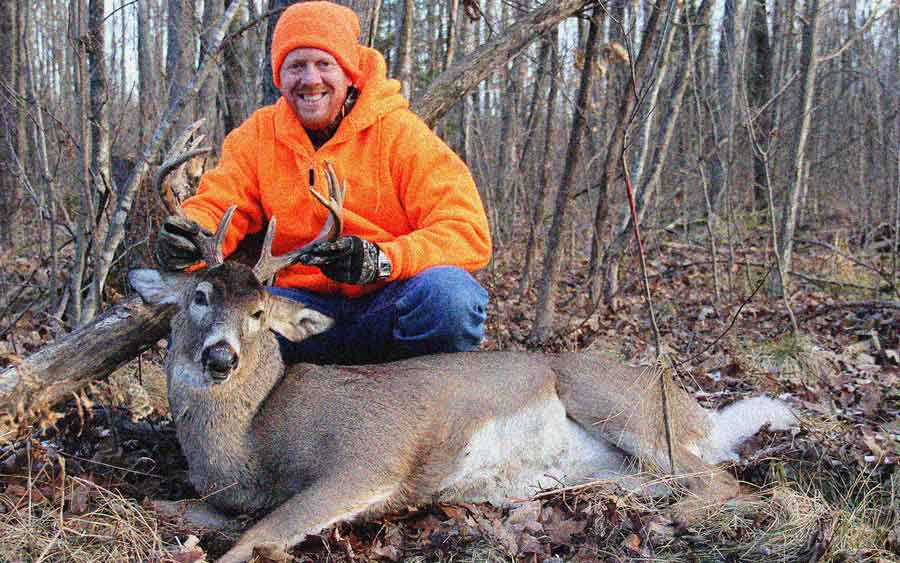
In conclusion, these are 8 of the best crossbow deer hunting tips to help you be successful on your next hunt. By following these tips, you’ll pull off setting up to shoot with safety, hone your skills, and attract deer to your stand. With a little practice, you’ll be able to take down even the biggest bucks.
